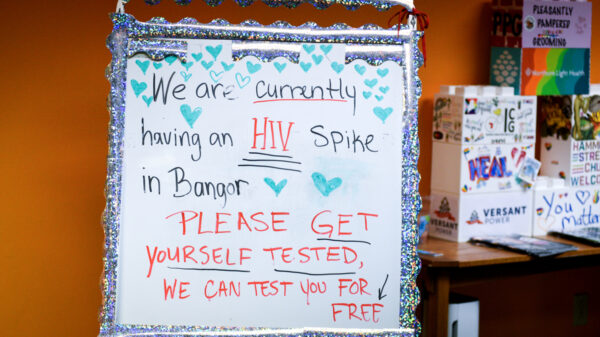Many individuals end their day with a five-ounce glass of wine, hoping this ritual wards off heart issues. Recent analyses suggest that this habit might indeed offer some protection, particularly for adults already at higher risk of cardiovascular disease. The latest evidence stems from the Spanish arm of the long-running PREDIMED trial, which tracked 1,232 older adults adhering to a Mediterranean diet. Those who averaged between half to one glass per day experienced significantly reduced heart risks.
After five years, participants saw their risk of heart attack, stroke, or cardiac death decrease by nearly half. Researchers verified wine consumption by measuring wine-derived tartaric acid in urine, providing a more accurate intake assessment than relying on memory alone. This study was spearheaded by Professor Ramon Estruch of the University of Barcelona and Hospital Clinic Barcelona.
Measuring Wine Intake with Precision
Traditional questionnaires often fail to capture accurate alcohol consumption, making it challenging to determine alcohol’s true effects. By using tartaric acid, a grape-exclusive metabolite, researchers can accurately assess how much wine someone consumed over the past week without relying on self-reporting.
“By measuring tartaric acid in the urine, alongside food and drink questionnaires, we have been able to make a more accurate measurement of wine consumption,” said Estruch.
The study confirmed that tartaric acid levels closely align with self-reported wine intake, validating it as a reliable marker of consumption.
The Role of Wine in Mediterranean Diets
Adopting objective measurement tools like tartaric acid could help resolve longstanding debates over wine’s health benefits, which range from “red wine is medicine” to “no amount is safe.” The researchers also adjusted for other lifestyle factors such as smoking and exercise, ensuring that the reduced risk observed was not merely a reflection of healthier living habits.
Tartaric acid specifically captures wine consumption, excluding beer or spirits, allowing researchers to isolate the effects of fermented grape products within a diet rich in extra-virgin olive oil, fish, and vegetables. This context is crucial, as many of wine’s plant compounds interact with the broader Mediterranean diet, enhancing their antioxidant effects.
Benefits of Moderate Consumption
Participants who consumed between three and thirty-five five-ounce glasses per month, equivalent to about half to one serving daily, saw their risk of major cardiac events drop by 50 percent. Those who drank less than half a glass daily experienced a 38 percent reduction in risk. However, benefits disappeared when consumption exceeded one glass per day, and in some analyses, the risk increased.
This pattern aligns with American Heart Association guidelines, which recommend limiting daily wine intake to one five-ounce serving for women and two for men. Men, who comprised just under half of the study group, appeared to benefit more, though statisticians caution that this difference might diminish in larger samples.
Nurses warn that pouring size matters, as many home glasses hold eight or nine ounces, inadvertently pushing people past the safer limit.
The Unique Composition of Wine
Wine contains a blend of polyphenols, including resveratrol, quercetin, and catechins, which appear to enhance the lining of blood vessels. Clinical reviews suggest that supplemental resveratrol can improve endothelial function, a critical factor in maintaining healthy blood pressure and preventing clots.
Red wine, due to skin fermentation, contains more antioxidants than white wine, though the latter still offers some benefits. This biochemical mix may explain why beer or spirits often lack similar health signals. While moderate alcohol consumption can raise high-density lipoprotein (HDL), known as “good” cholesterol, ethanol also increases triglycerides and blood pressure at higher doses. Polyphenols might tip the balance towards benefit, but only within a narrow consumption window.
Risks of Excessive Wine Consumption
A 2023 systematic review involving data from 4.8 million people found no reduction in all-cause mortality among moderate drinkers once misclassified former drinkers were excluded. The authors suggested that previous optimism likely arose from comparing social drinkers to those who quit due to illness.
Heavy pouring is indisputably harmful. Even one extra daily drink can raise systolic blood pressure by two to four millimeters of mercury, enough to push many into hypertension.
Professor Giovanni de Gaetano emphasized that the biomarker approach offers robust evidence linking moderate wine consumption to lower cardiovascular disease risk but cautioned against higher consumption levels.
Alcohol also poses addiction risks, with the Centers for Disease Control and Prevention (CDC) estimating that excessive drinking contributes to one in ten deaths among working-age adults. This statistic underscores why public health agencies maintain that zero consumption is the only completely risk-free option.
Wine, Health, and Lifestyle Choices
For adults over 35 who already follow a Mediterranean diet, a small glass of wine with dinner may fit into a heart-conscious lifestyle. However, those who are pregnant, on interacting medications, or battling addiction should not interpret the PREDIMED results as a green light for drinking.
The nutrients that make wine appealing, such as resveratrol, are also found in grapes, blueberries, nuts, and olive oil. Those who choose to abstain from alcohol can still gain similar antioxidant benefits without the downsides of ethanol.
Clinicians stress that no one should start drinking for health reasons. Instead, the sensible takeaway is that very modest wine consumption, enjoyed with meals and within established limits, is unlikely to harm and might even benefit certain high-risk individuals when paired with a diet rich in vegetables, fish, and extra-virgin olive oil.
The study is published in the European Heart Journal.





































































